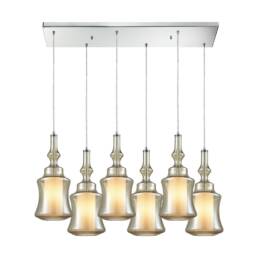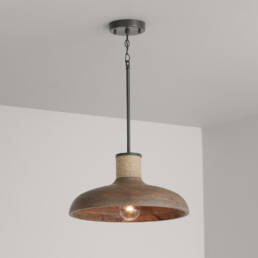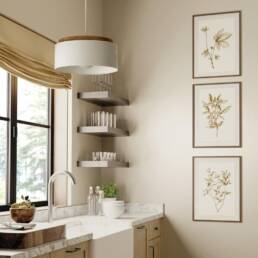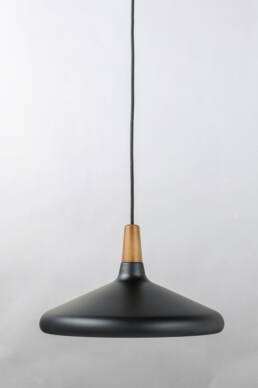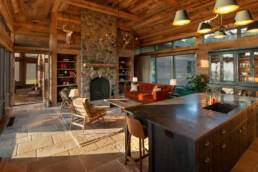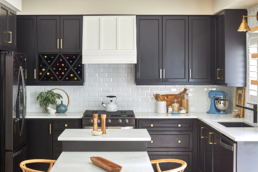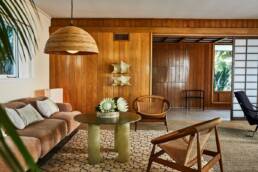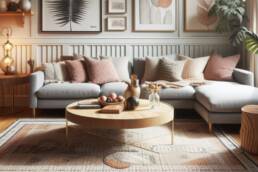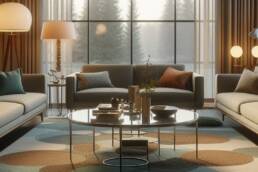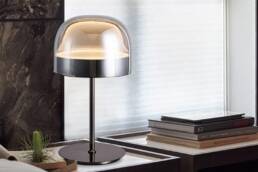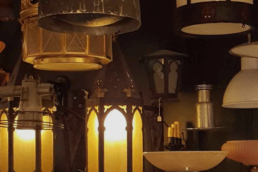Scandinavian interior design is known for its simplicity, functionality, and minimalistic approach. It emerged in the mid-20th century in the Nordic countries, including Denmark, Norway, Sweden, Finland, and Iceland. The design principles and elements of Scandinavian interior design are characterized by a harmonious balance of aesthetics, functionality, and a connection to nature. Here are some key aspects to consider:
Design Principles:
Functionality:
Scandinavian design prioritizes functionality and practicality. Furniture and decor items are chosen for their usefulness and efficiency.
Simplicity and Minimalism:
Clean lines and a minimalist approach are central to Scandinavian design. Clutter is minimized, and spaces are kept simple and uncluttered.
Natural Light:
Maximizing natural light is essential. Light colors, large windows, and light curtains contribute to a bright and airy atmosphere.
Neutral Color Palette:
A neutral color scheme dominated by whites, grays, and muted tones creates a calm and timeless backdrop. Splashes of color are often added through accessories or furniture.
Use of Natural Materials:
Natural materials such as wood, stone, and leather are frequently used in Scandinavian design. These materials add warmth and a connection to nature.
Balance and Proportion:
Achieving balance and proportion is crucial. Furniture and decor are carefully selected to create a sense of visual harmony within the space.
Hygge (Coziness):
The concept of “hygge” is central to Scandinavian design. It emphasizes creating a cozy and comfortable atmosphere, often achieved through soft textiles, rugs, and warm lighting.
A natural color palette with clean lines, open spaces, lots of light and functional furniture gives the Interior a warm and inviting feel.
Design Elements:
Clean Lines:
Furniture and architectural elements feature clean, straight lines. This simplicity contributes to the overall modern and uncluttered aesthetic.
Functional Furniture:
Furniture pieces are chosen for their functionality and practicality. Multi-functional pieces are often favored in smaller spaces.
Open Floor Plans:
Open floor plans are common in Scandinavian design, promoting a sense of spaciousness and unity between different areas of the home.
Textiles:
Soft textiles such as wool, cotton, and linen are used for throws, cushions, and rugs. These textiles add warmth and comfort to the minimalist design.
Wood Accents:
Wooden elements, particularly light woods like birch and pine, are used for furniture, flooring, and accents. This adds a natural and organic feel to the interior.
Geometric Patterns:
While Scandinavian design is generally minimalistic, subtle geometric patterns are sometimes incorporated into textiles or wall coverings to add interest.
Greenery:
Plants and greenery are often used to bring a touch of nature indoors. Potted plants and fresh flowers contribute to the overall freshness and vitality of the space.
Understanding and incorporating these principles and elements will help you create a Scandinavian-inspired interior that is both stylish and functional, with a focus on simplicity, comfort, and a connection to the natural world.
Here are four lighting choices to support your Scandinavian Inspired interior.


